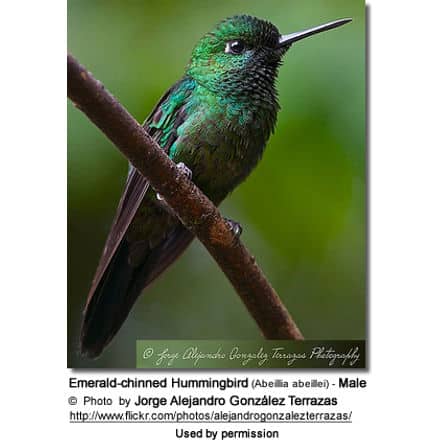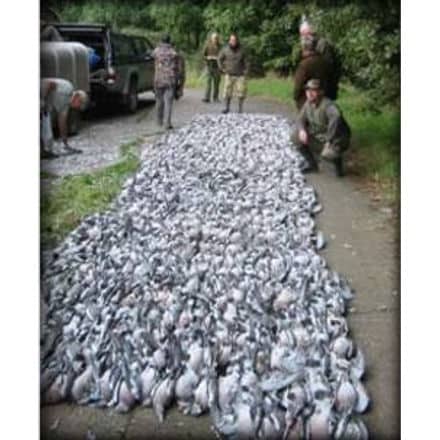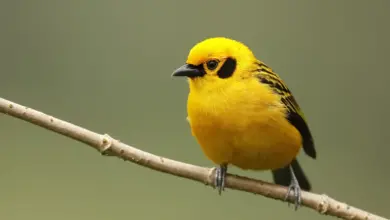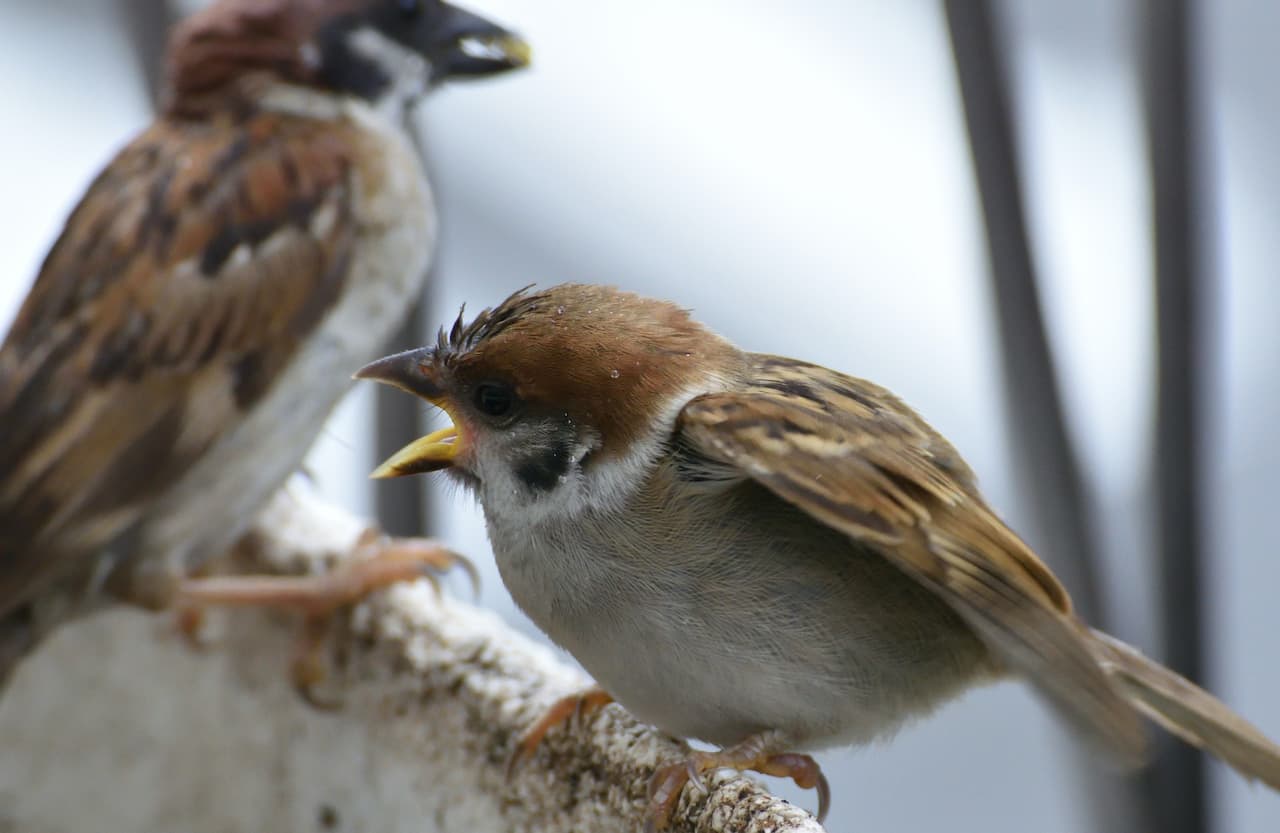Scaly-breasted Hummingbirds
The Scaly-breasted Hummingbird (Phaeochroa cuvierii) is a Central and South American hummingbird that ranges from Guatemala to northern Colombia.
Distribution / Range
The Scaly-breasted Hummingbird is found in the following countries: Belize, Guatemala, Honduras, Nicaragua, Costa Rica, Panama, and Colombia. It is fairly common in the Pacific lowlands of Costa Rica, but it is uncertain if this species is a regular in Mexico.
Their preferred habitats include moist lowlands and foothills, including forests, mangroves, coffee plantations, and open areas with scattered tall trees (particularly if blooming).
Subspecies and Distribution
- Phaeochroa cuvierii cuvierii – Nominate Race
- Range: East and central Panama
- Phaeochroa cuvierii roberti
- Range: Atlantic slope of Belize, and Guatemala to Costa Rica (and possibly even Mexico)
- Range: Pacific slope of Costa Rica
- Range: Coiba Island – a large island located off the Pacific coast of the Panamanian province of Veraguas
- Range: Coastal northern Colombia

Hummingbird Resources
- Hummingbird Information
- Hummingbird Amazing Facts
- Attracting Hummingbirds to Your Garden
- Hummingbird Species
- Feeding Hummingbirds
Description
The Scaly-breasted Hummingbird is a rather large hummingbird that averages 4.5 inches or 11.5 cm in length.
The plumage is fairly painful; the upper plumage is metallic bronze-green and the under plumage is mostly greyish / buff. It has a dark blue-green tail with white tips on the outer tail feathers. The throat and chest feathers are dull green with greyish buff edging – producing the effect of scales – for which it was named. It has a small whitish spot behind each eye.
It has a long bill; the upper bill is black and the lower is reddish with a black tip.
Males and females look alike.
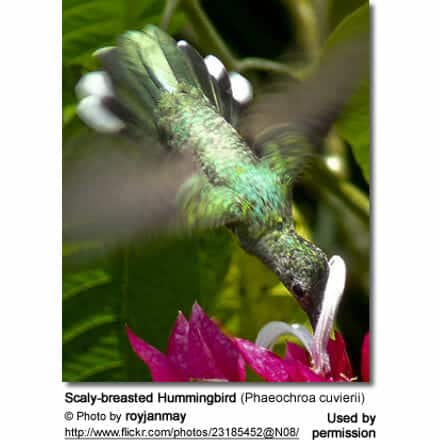
Nesting / Breeding
Hummingbirds are solitary in all aspects of life other than breeding, and the male’s only involvement in the reproductive process is the actual mating with the female. They neither live nor migrate in flocks, and there is no pair bond for this species. Males court females by flying in a U-shaped pattern in front of them. He will separate from the female immediately after copulation. One male may mate with several females. In all likelihood, the female will also mate with several males. The males do not participate in choosing the nest location, building the nest, or raising the chicks.
The female is responsible for building the cup-shaped nest out of plant fibers woven together and green moss on the outside for camouflage in a protected location in a shrub, bush, or tree. She lines the nest with soft plant fibers, animal hair, and feathers down, and strengthens the structure with spider webbing and other sticky material, giving it an elastic quality to allow it to stretch to double its size as the chicks grow and need more room. The nest is typically found on a low, thin horizontal branch.
The average clutch consists of two white eggs which she incubates alone, while the male defends his territory and the flowers he feeds on. The young are born blind, immobile, and without any down.
The female alone protects and feeds the chicks with regurgitated food (mostly partially-digested insects since nectar is an insufficient source of protein for the growing chicks). The female pushes the food down the chicks’ throats with her long bill directly into their stomachs.
As is the case with other hummingbird species, the chicks are brooded only the first week or two and are left alone even on cooler nights after about 12 days – probably due to the small nest size. The chicks leave the nest when they are about 20 days old.
Diet / Feeding
The Scaly-breasted Hummingbirds primarily feed on nectar taken from a variety of brightly colored, scented small flowers of trees, herbs, shrubs, and epiphytes.



